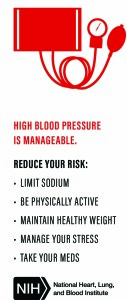NIH study shows exercise may lower risk of high blood pressure in African Americans


 Researchers who study cardiovascular health have long known that exercise is one way to keep high blood pressure at bay. But studies confirming this protective effect have mainly focused on white patients, leaving it unclear whether African Americans, the most vulnerable of all populations, have stood to gain in similar ways.
Researchers who study cardiovascular health have long known that exercise is one way to keep high blood pressure at bay. But studies confirming this protective effect have mainly focused on white patients, leaving it unclear whether African Americans, the most vulnerable of all populations, have stood to gain in similar ways. Redmond acknowledged that getting people to boost their exercise levels weekly can be a challenge. Barriers to establishing an exercise routine include lack of access to parks and streets that are perceived as safe; competing demands for time (such as work, child care responsibilities and commuting time); and for many women, concerns about hair care.
Redmond acknowledged that getting people to boost their exercise levels weekly can be a challenge. Barriers to establishing an exercise routine include lack of access to parks and streets that are perceived as safe; competing demands for time (such as work, child care responsibilities and commuting time); and for many women, concerns about hair care.